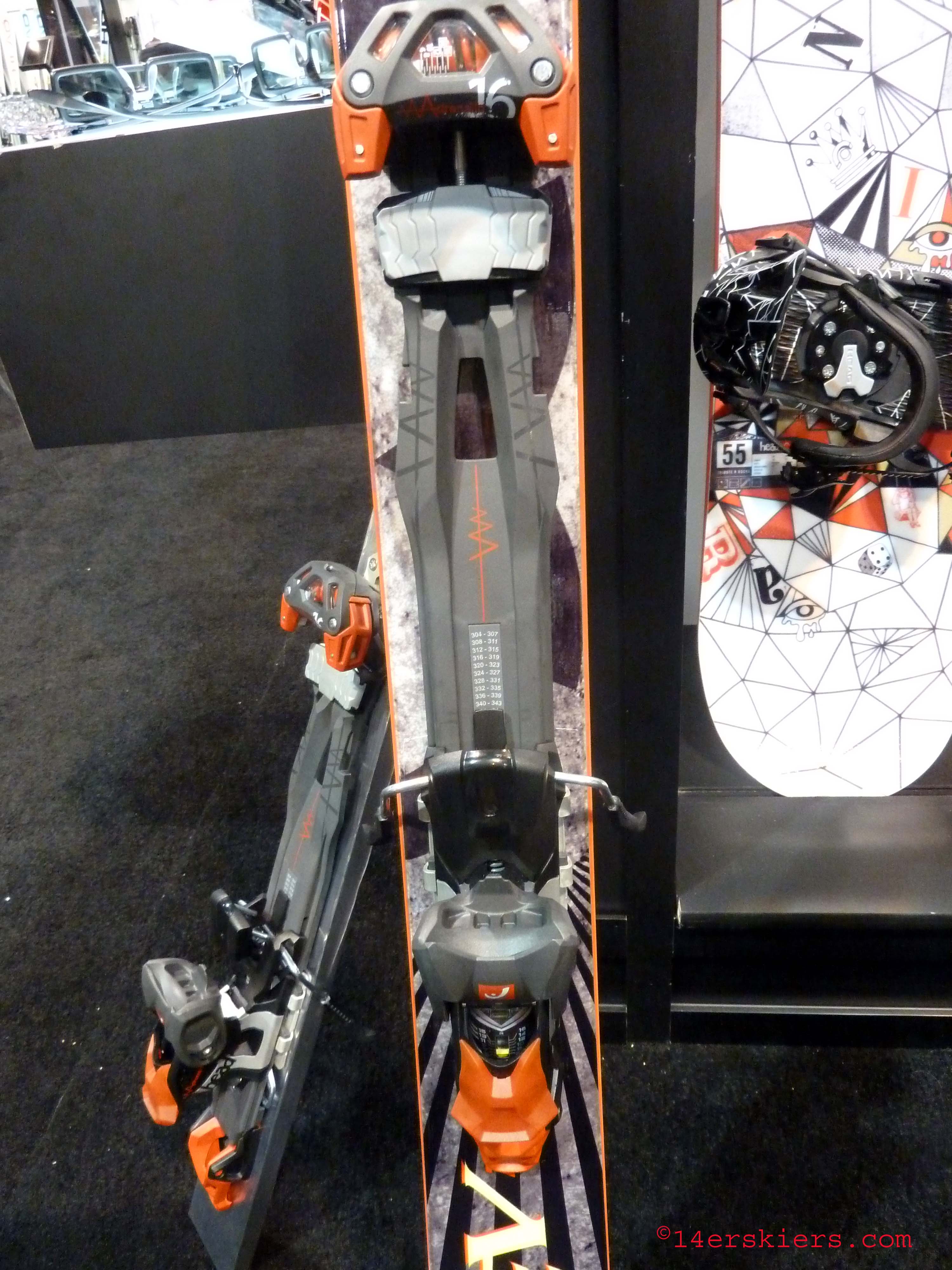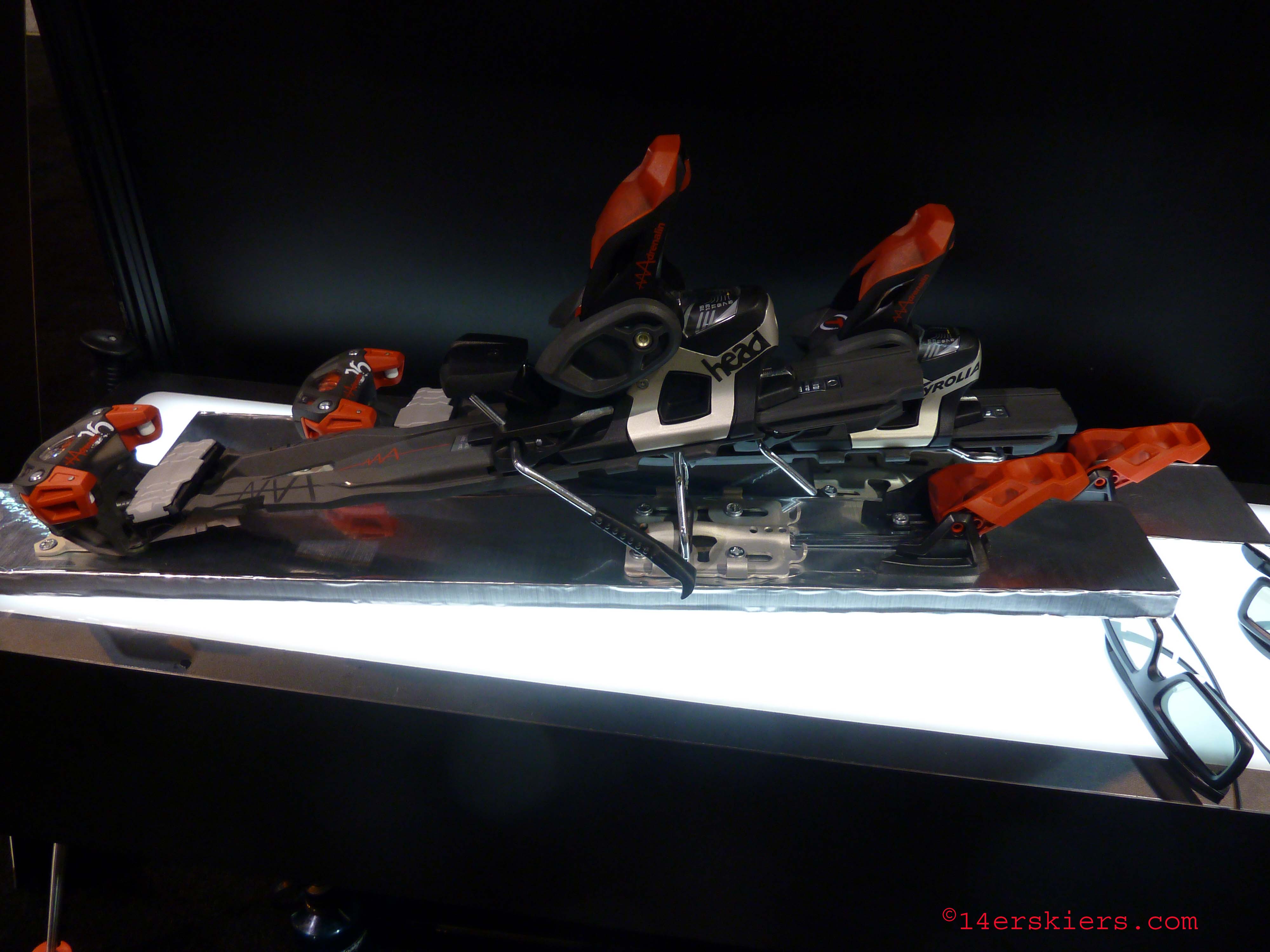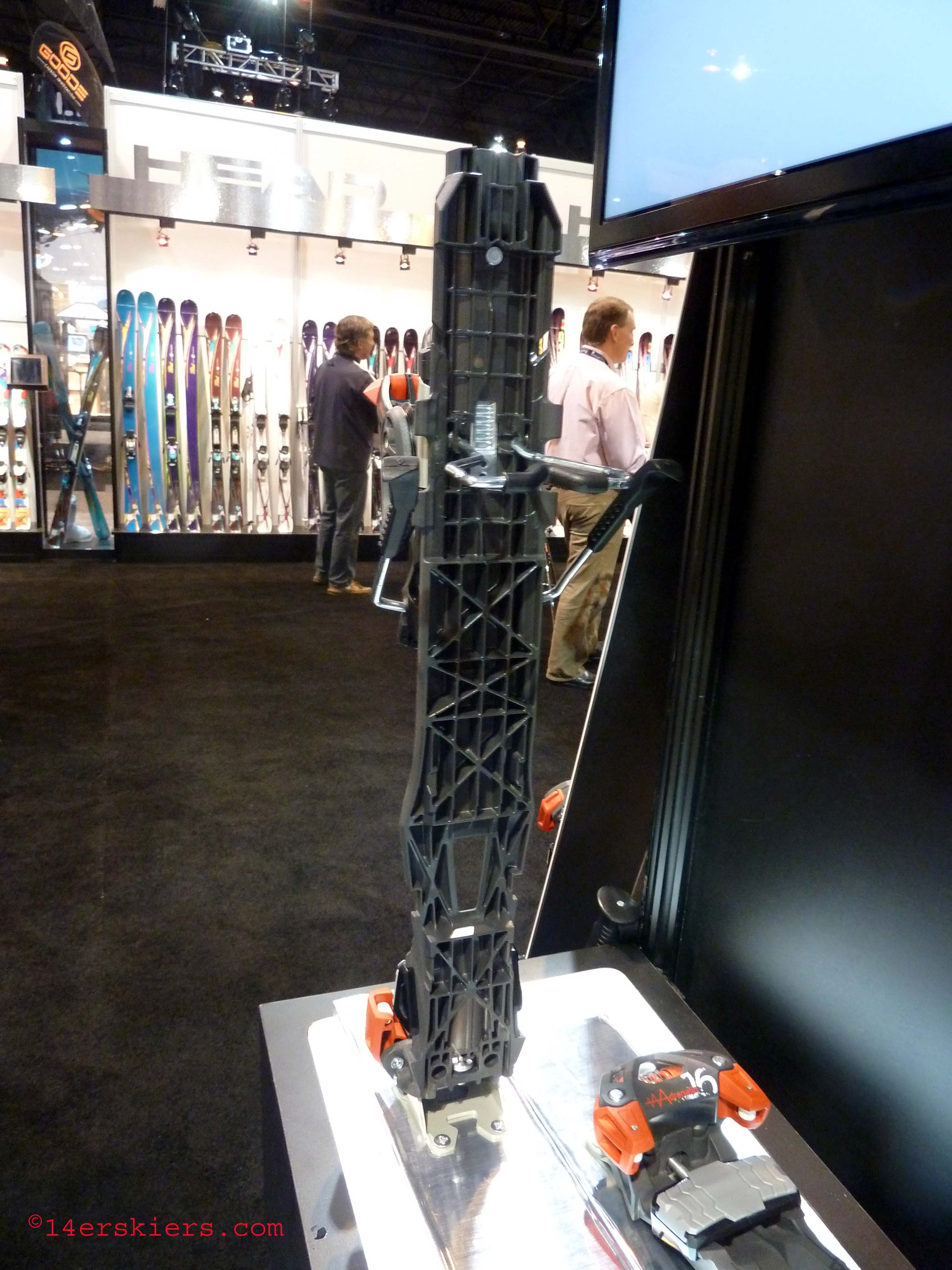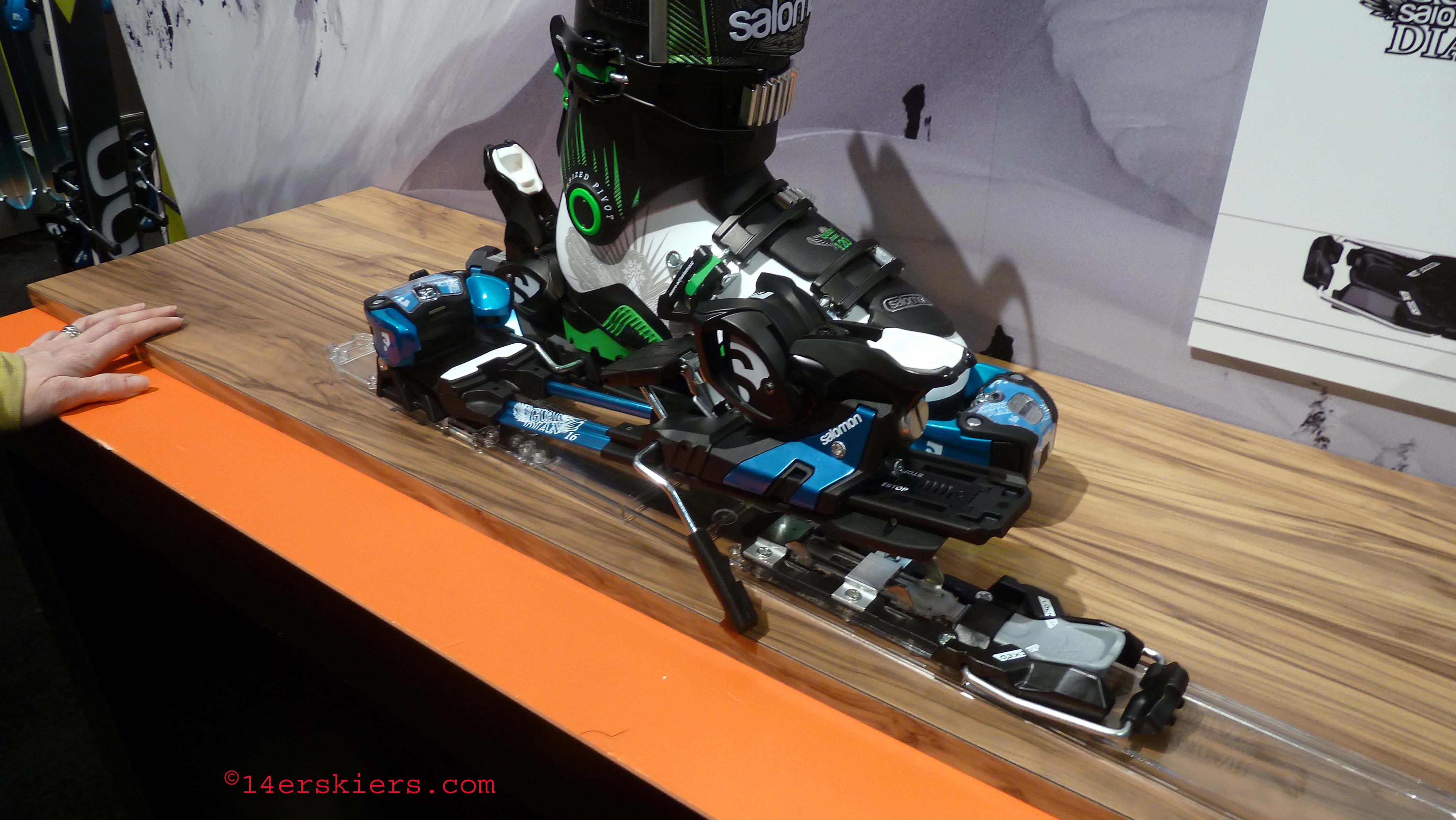SIA: Binding Wars- Tyrolia/Head and Salomon/Atomic
(Last Updated On: February 4, 2012)
The Marker Duke and Baron bindings have proven to be very popular over the last few years, so it certainly shouldn’t be a surprise that some of the other big players on the downhill binding market are now providing some competition. This class of binding deserves its own name- perhaps “Downhill Touring” (DT) or “Freeride Touring” (FT). Another player in this category is the MFD Alltime, a hinged plate that you can attach almost any standard alpine binding. Yes, they tour to an extent, but not like a Dynafit/tech binding or even a Fritchi. But that doesn’t mean I don’t like the category.
First, some thoughts on my Dukes. I actually like them a lot. Unlike my Fritchis or Dynafits, I can ski them inbounds with 100% confidence. Additionally, unlike my Dynafits I can quickly change from my alpine boots to my AT boots. When I’m unsure if I’ll be touring or skiing inbounds, I can limit myself to the Dukes without compromising too much touring or aggressive skiing inbounds. But any tour more than a couple of hours is just plain brutal.
They’re also very useful for the lazy man’s versions of backcountry skiing- namely slackcountry and sled laps. This is a topic that is rarely discussed, but should honestly be on your mind when you do tours of this type. Let’s say you’re in Jackson Hole and you head out the Rock Springs gate and hike up the pre-existing boot pack. You ski first and then watch your partner get caught in a slide above you. If you’re in standard alpine bindings and you have no skins, you’ve basically signed your partners death certificate- you’ll spend an hour postholing up to the debris just to break out your beacon/probe/shovel to find a corpse. So please, if you find yourself skiing slackcountry make sure you have some sort of backup plan (a touring binding of some sort plus skins) to reach your partners.
Enough of that, let’s get to the Tyrolia/Head offering, the Adrenalin, complete with a high DIn setting of 16.

Tyrolia’s offering seeks to differentiate itself through a “floating” heelpiece. All the cool new ski designs are rendered somewhat moot if a DT binding, with its huge rigid zone, doesn’t allow the ski to flex the way its designers intended. So the Tyrolia binding doesn’t fix the heel of the binding in place- instead it has 2 small cylindrical tabs mate up with two similar tabs on the fixed part of the heel to lock it down while still allowing movement. Even a quick hand flex of a ski will show the system works. The system is visible on the brushed metal fixed part of the binding and the “rail” of the binding above it. Also, unlike the Duke, you don’t have to step out to go from ski-hike-ski modes. The question we’d like to see answered in real-life usage is whether or not the system ices up during the skin, making it difficult to get into ski mode (the duke requires careful cleaning of its track to lock it down).

Does it work in practice? We won’t know unless we get a chance to try the binding out on the snow. Another feature of the binding is that you can adjust the binding length without tools- but really, how hard is it to use a leatherman, even out on the trail? Then there’s this:

Yes, that’s plastic connecting the toe and heel. Not a single bit of metal in there. Now, I had the original white Fritchi Titanal binding, and I broke the metal connecting rod on that binding in relatively short order. The next Fritchi, the blue Titanal 2, had a much stronger and heavier connecting bar that I never did break. I can only hope that Tyrolia did their homework- if that plastic breaks on a skier somewhere exposed, it’s going to be a nasty accident. I’m not sure I trust it, that’s all I can say, but time will tell with this binding. Reported (unverified) weight is 40g more than the Duke, and well over 100g lighter than the Salomon.
Speaking of which, on to the Salomon Guardian.

Like the Tyrolia, the Guardian lets you switch modes without stepping out. This is something that drives me crazy about not only my Dukes, but also my Dynafits. Hit the flats at the end of the run- boom, go to tour mode. It gets steeper again- boom, go to ski mode. This feature alone gets me excited about this binding. The “teeth” that lock the binding down in ski mode look less prone to ice and snow buildup as well. Also like the Tyrolia, this binding isn’t entirely “fixed”, allowing the ski to flex naturally. It’s interesting to note that both bindings addressed both of these Duke downfalls. Still, I’ll take a wait and see approach with this binding given Salomon’s other ill-fated forays into the touring world.
More on the Tyrolia:
More (a lot more, at almost a half hour) on the Salomon:
Frank Konsella
Latest posts by Frank Konsella (see all)
- Bluebird Backcountry Ski Area - February 14, 2020
- Gear Review: Smith 4D MAG Goggles - January 6, 2020
- Gear Review: LEKI Tour Stick Vario Carbon Ski Poles - December 9, 2019


Other than weight, I’ve been enjoying my first pair of Dukes on my Folsoms. Tour smooth, rock solid, etc.
What I’ve been puzzling over is what will replace my Naxos on my lighter A/T setup when it’s time to replace it. Hard to cut through the chaff of the Dynafit/Fritschi wars on bulletin boards, etc. with staunch encampment on both sides. When the Marker Tour came out I was pretty thrilled…until I read how it reviewed (and liked to break).
Was there anything at SIA in that “no man’s land” category binding wise? Somewhere between Dynafit and Fritschi? I guess I would be leaning towards Fritschi, assuming they keep evolving and improving, but there is no killer in my mind, no obvious choice.
Maybe I’m just elitist because I build aerospace stuff for a living and know that materials and engineering exist right now to make a binding that hammers like a Duke but weighs close to a Fritschi or Naxo. I got excited at the beginning of your blog entry here until I saw a) that no major weight losses were incurred by either and b) Tyrolia had a complete plastic bridge plate. Arrrgh!
It was cool to see free flex coming back though. Ironically, I remember Marker piston bindings (front side stuff as you remember a few years back), I had a pair. Then they completely eschewed that concept on their next evolution of binding, only to see it come back from their competitors.
Anyway…still waiting for the lighter weight A/T killer….
Good writeups btw, thanks.
It IS a tough one, Keith, at least for those of us who drank the Dynafit Kool-aid and decided it was simply sugar, food coloring, and artificial flavor. I’m afraid there wasn’t anything else to take note of besides going with Dynafit/Tech bindings or Fritchis as far as true touring bindings go. Basically Fritchis are much more user friendly and tech bindings are much lighter and are rock solid when you’re skiing. Tough call. Although if you haven’t broken your Naxos and don’t despise them, you’ll probably love Fritchis.
Perhaps Lars Chickering-Ayers is on the right track, sliding a dynafit toe in like a splitboard binding and then sliding in an alpine toe for the descent. Super high fiddle factor though, among a number of issues. Handfull of bindings out there getting tested right now from what I hear..
Feel free to get your aerospace on and design something better. Just remember consumers can’t afford the same toys as NASA.
Got to ski around for a bit on the Guardian bindings today. The lower stack height is noticeable, and they definitely ski like a good alpine binding. The AFD is fixed, however, so skiing these with a rubber soled AT boot is a gutsy proposition. It’s too bad, because if they hold up they might have been worth having, but I wouldn’t feel comfortable at all putting a rubber soled boot in that binding. I’ll pass.
Has anyone broken the tyrolias yet? Im stuck between those and the salomon guardians to place on a new pair of Moment Night trains with 123mm underfoot for backcountry jib and charge. Personally I like how the tyrolias have more of a free flex design than the Salomons, as far as I know a more neutral binding delta, have 3 angles for ascension, and are lighter. But I’m worried about the plastic connection under the foot.
I think if they were breaking in droves, we’d all have heard about it by now. then again, maybe not.